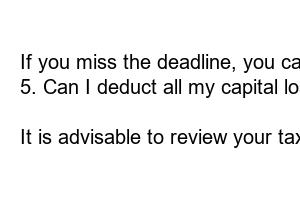연말정산 하는법
Title: Year-End Tax Settlement: A Comprehensive Guide to Maximize Returns
Introduction:
As another year comes to a close, it’s time to tackle the ever-important task of year-end tax settlement. While it may sound intimidating, understanding the process and taking the necessary steps can help you maximize your returns and ensure a hassle-free tax season. In this guide, we will walk you through the key aspects of year-end tax settlement so that you can approach it with confidence.
1. Organize Your Financial Records:
To kickstart the process, gather and organize all your financial records. This includes income statements, expense receipts, investment statements, and other pertinent documents. By doing so, you’ll have a clear overview of your financial situation and make the entire tax settlement process much smoother.
2. Assess Changes in Tax Laws:
Stay up to date with any changes in tax laws that might impact your tax liabilities. By understanding these changes, you can make informed decisions and potentially discover new opportunities to optimize your tax situation. Consider consulting with a tax professional to ensure you are aware of the latest developments.
3. Evaluate Deductions and Tax Credits:
Identify and evaluate deductions and tax credits that you may qualify for. Itemize your deductions, such as mortgage interest, student loan interest, and medical expenses, to potentially lower your taxable income. Additionally, explore tax credits for which you might be eligible, such as education credits or energy-saving home improvements.
4. Review Retirement Contributions:
If you have a retirement account, ensure that you have maximized your contributions for the year. Contributing to retirement accounts not only helps secure your financial future but may also provide you with valuable tax benefits. Stay informed about contribution limits and consider making catch-up contributions if you are eligible.
5. Plan for Charitable Contributions:
Charitable giving not only benefits the causes you care about but can also lower your tax liability. Review and document any charitable donations you made throughout the year. Remember to gather receipts and acknowledgment letters for tax purposes. Consider strategic planning to make the most impact with your contributions and maximize your tax benefits.
6. Evaluate Capital Gains and Losses:
Take stock of your investments and evaluate any capital gains or losses you might have incurred during the year. Consider selling assets with losses to offset capital gains and potentially lower your tax burden. Review the rules surrounding capital gains, especially if you are in a higher tax bracket, to plan your investment strategy accordingly.
7. Review Tax Withholdings and Estimated Payments:
Review your tax withholdings to ensure they align with your actual tax liability. If necessary, make adjustments to avoid underpayment penalties or overpaying and receiving a large refund. Understanding your estimated tax payments and their impact on your overall financial situation is crucial for year-end tax planning.
Summary:
Year-end tax settlement can be a complex process, but by following these steps, you can maximize your returns and avoid unnecessary stress. Remember to organize your financial records, stay informed about changes in tax laws, assess deductions and tax credits, review retirement contributions, plan for charitable contributions, evaluate capital gains and losses, and review tax withholdings and estimated payments. By taking these proactive steps, you will be well-prepared for tax season and ensure your financial well-being.
FAQs:
1. How early should I start my year-end tax settlement?
Starting early is always recommended. Aim to begin gathering all the necessary documents and organizing your finances at least several weeks prior to the end of the year.
2. Can I do my year-end tax settlement without professional help?
While it is possible to do it on your own, consulting with a tax professional can provide valuable insights and help you identify additional tax-saving opportunities.
3. Is it essential to keep receipts for charitable contributions?
Yes, it is crucial to keep receipts and acknowledgment letters for all charitable contributions to substantiate your claim while filing taxes.
4. What if I miss the deadline for contributions to my retirement account?
If you miss the deadline, you can still contribute until the tax-filing deadline (typically April 15th) and apply it to the previous year’s tax liability.
5. Can I deduct all my capital losses to offset capital gains?
Not entirely. There are limits on the amount of capital loss you can claim to offset capital gains. Consult a tax professional for precise guidance.
6. How often should I review my tax withholdings and estimated payments?
It is advisable to review your tax withholdings and estimated payments at least once a year to ensure they align with any changes in your financial situation or tax laws.

